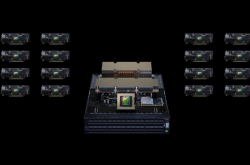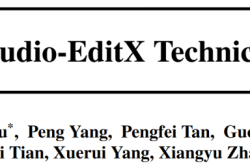Hikvision Unveils 'Aggregation Function' for Traffic Incidents, Cutting Down Repeated Alerts by 40%
![]() 11/07 2025
11/07 2025
![]() 507
507
Detecting traffic incidents is a standard feature in road - network operation monitoring systems. However, highway operators still face a long - standing problem. With the widespread implementation of traffic incident detection systems, when incidents take place, computer screens are frequently inundated with a vast amount of alert information. This not only substantially boosts the workload of incident handling but also diminishes the efficiency of incident detection. Moreover, it indirectly impacts the smoothness and safety of travel for every vehicle owner.
In response to this prevalent industry challenge, Hikvision's 'Event Aggregation' function for traffic incident detection offers a viable solution. Real - world cases demonstrate that repeated alerts can be slashed by over 40%.
Decrease in Repeated Alerts, Marked Enhancement in Review Efficiency
A highway monitoring project once suffered from a deluge of repeated alerts during testing. Over a 37 - day period, the platform detected 3,730 incidents, averaging nearly 100 alerts per day. A significant portion of these alerts were repetitive notifications about the same incident.
After the introduction of the 'Event Aggregation' function, the problem of repeated alerts saw a substantial improvement. During the testing phase, the platform identified 1,226 original incidents. After customizing and fine - tuning alert strategies according to business requirements and implementing intelligent aggregation, only 712 alerts were forwarded for manual review. This resulted in a repeated alert merging rate of 41.9%, directly halving the ineffective workload. With continuous refinement of alert strategies, it is anticipated that the alert review workload will be reduced by over 60%.

Three Aggregation Logics to Precisely 'Screen Out' Repeated Alerts
The essence of this function lies in three types of 'intelligent merging logic,' which can be simply explained as follows:
Single - Point Aggregation: For the same type of incident occurring at the same monitoring point, like illegal vehicle parking, alerts will not be repeatedly sent. Instead, they will be combined into a single alert at regular intervals, preventing 'second - level repeated reminders'.
Continuous - Point Aggregation: When incidents span multiple monitoring points, such as non - motorized vehicle traffic or congestion, regardless of the number of monitoring points they pass through, they will be consolidated into a single comprehensive incident record. This eliminates the need for individual point - by - point reviews.
Associated Event Aggregation: In scenarios like traffic accidents or construction, multiple related incidents such as vehicle parking, pedestrian presence, and roadblocks may occur. The system automatically merges these 'chain reactions' into a single alert, covering the entire situation.
Without requiring complex operations, the system automatically detects repeated information, transforming 'scattered noise' into 'clear signals'. This enables reviewers to concentrate on truly significant incidents that demand attention.
Not Just Cutting Down on Repetition, but Also 'Lightening the Load and Boosting Efficiency' for Operations
Besides achieving a core reduction in repeated alerts, this function also brings considerable additional value. By eliminating the need to sift through a massive volume of repeated information, the efficiency of reviewing individual incidents has increased by over 50%. The centralized display of associated incidents helps staff quickly comprehend the full scope of an incident, reducing the likelihood of missed or incorrect judgments. Scenarios such as construction, illegal parking, road debris, and non - motorized vehicle traffic can all be precisely aggregated, covering most highway incident detection scenarios.
This function is supported by Hikvision's event detection server and intelligent highway comprehensive monitoring platform. Through the combined efforts of hardware and software, highway incident detection becomes more intelligent and efficient. Intelligent aggregation 'filters out the noise', allowing more time to be devoted to truly critical incident handling and facilitating improvements in the quality and efficiency of highway operations.







